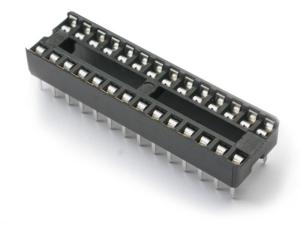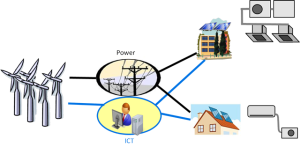If only these walls could talk…...
We all may have heard this phrase; however, due to the wonders of science (will it ever stop mystifying and mesmerizing us?), there is a possibility to turn this phrase into a reality, probably some years down the line. You may be familiar with the movie ‘Back to the Future’ part 2, which showed what a smart home would look like in 2015, featuring scene screen windows tuned to the scenery channel, as well as voice-controlled fruit baskets. Or we can talk about the beloved cartoon ‘The Jetsons’, which showed a very futuristic scenario to the audiences in the 70s and 90s. Who wouldn’t want that? Well, with smart home technology becoming better and better by the day, we can definitely say that the future is now. And the smart home market is definitely flourishing.

Smarter Than Sherlock…
Smart home refers to the system of electronic devices and sensors whose control lies at the tip of the homeowner’s fingers, which is to say that they can receive and follow commands over the internet through smartphones, computers and other devices. It is often referred to as home automation or domotics (from the Latin ‘domus’, meaning ‘home’), and is part of the Internet of Things (IoT) ecosystem. The connected systems and devices operate together, while also sharing data regarding consumer usage, which enables them to make decisions based on the homeowners’ preferences. Even though there are many competitive players vying for market and consumer share for smart homes, there is a curious absence of industry standards in this space.
The humble beginnings of home automation can be traced back to 1975, with the release of the X10 by Pico Electronics in Scotland, which allowed for the remote control of home appliances and devices. Till today, it remains heavily influential and popular, finding usage in home environments. Many years down the line, Insteon, a home automation organization, came along with a technology that combined wireless signals with electric wiring. This was in 2005, and from that point, developments in the smart home field have come thick and fast. Nest Labs, which came into being in 2010, and was bought by Google in 2015, launched the Nest Learning Thermostat in 2011, besides also creating security cameras and smart smoke detectors.
Many Options For Many Functions!
Zigbee and Z-Wave have also made their mark on the smart home market, as have the technology behemoths such as Amazon, Apple and Google, who have released their own platforms of Amazon Echo, Apple HomeKit and Google Home. With the presence of Amazon Alexa and Google Assistant, there are countless opportunities for the growth of smart devices and smart home systems. Some of the most unique systems and devices that have been seen are:
- Canary - Besides acting as a security system, this item also can analyze air quality, while also controlling temperatures and humidity through analysis.
- Kevo Smart Lock - This smart lock allows homeowners to lock and unlock the door remotely by specifying times to unlock, allowing permitted parties such as cleaners or a neighbor to let themselves in without the use of a key.
- Lutron Caséta Wireless - Home occupants looking for energy savings, look no further. The product helps in optimal distribution through use of battery-operated shade, temperatures and lights. The settings are all based on the oner preferences, and can be controlled and changed via smartphones.
- Sage Home Automation - Connects and manages the entire home through mobile devices or television, creating a true smart home experience.
- Homeowners can also carry out remote gardening, through the use of remote-controlled sprinkler systems and robotic lawn mowers. They can be programmed to increase or decrease water supply, as well as make decisions based on future weather patterns.
The Times, They Are A-Changin’….
The global population is now constantly on the move. With the advent of technology, it really has become a small world to live in. There has been a huge growth of the tech-savvy population. And this is a major factor that has led to the booming of the smart home scene. The usage of smartphones, which is a key component in this scenario, has never been more pronounced, with even the backward regions such as Sub-Saharan Africa witnessing rapid adoption.
The smart home market has generated quite a buzz in the United States, owing to the presence of major competitors, as well as a substantial number of connected devices. The penetration of smart devices in households in the region is 32.4% in 2020, which is expected to rise to 52.4% in 2024. Besides the U.S., Western Europe economies are also quite ahead in terms of smart home installations.
Another concept that is closely related to this area is “smart buildings”. Of course, every smart home is a smart building, but vice-versa, it is not true. Smart buildings are more focused on application of IoT for improving the efficiency of the building, reducing energy costs associated with it, having a positive environmental impact, as well as ensuring safety and maximizing employee satisfaction. For example, a smart building can save on lighting and energy costs through the use of occupancy sensors.
Smart buildings can also connect to smart grids, which would lead to optimum maintenance and energy distribution, as the electric grids and building components can ‘listen’ and ‘talk’ to each other. Additionally, smart buildings can benefit the management through the concept of ‘predictive maintenance’, wherein maintenance and failures, as well as supplies, can be managed much more efficiently.
Balancing Optimism With Cautiousness
Factors that have led to the high adoption of smart homes include:
- High proportion of internet users around the globe as well as the continued rise in smartphone penetration.
- Increased need to monitor homes from remote locations (increased security) has created healthy demand for the smart homes industry.
- Increased focus on utilizing energy-efficient solutions, as well as minimizing carbon emissions.
- Focus of market competitors on widening their smart home product portfolios.
- Entertainment systems, lighting control solutions, home system appliances, and smart speakershave witnessed huge growth in popularity in the past few years, which again increases the attractiveness of the smart homes market.
- Increase in aging population, which constitutes a significant demographic in the market, as well as rising disposable income in developed and emerging economies, are also driving the market.
However, every technology brings with it a set of problems, and this is true in case of smart homes. The major challenge for the smart homes market is security and privacy of consumers, as you would be having information about every possible functioning in the house, which other members would definitely feel as an invasion of privacy. Also, even though the technology has been there for quite some time, it is still proving to be expensive to adopt by a large number of households. Such challenges need to be tackled at the earliest.
Read More@ https://www.grandviewresearch.com/industry-analysis/smart-homes-industry
Recent Developments
Some of the key competitors include Honeywell, ABB Ltd., Lutron Electronics, Crestron Electronics, Control4 Corporation Tyco International Ltd., Legrand S.A., Siemens AG, Schneider Electric S.A. and Emerson Electric Co. Technology giants such as Apple, Amazon and Google have also made an entry in this space, and currently are pulling in a lot of consumers. Some important developments in the smart home industry include:
- Google joined Apple and Amazon, among others, to bring forth the ‘Connected Home over IP’, an independent working group managed by the Zigbee Alliance, with the goal to develop a new, open smart home connectivity standard based on IP (Internet Protocol), in December 2019.
- Applerecently filed a patent which outlines the functioning of an actual independent smart home. The plan involves detection of objects such as people and sofas in a home automatically to generate a floor plan, which would allow Apple to guess the type of smart technology introduced in the home.
- Honeywell teamed up with Verizon in January 2020, regarding integration of the former’s IoT sensorswith the latter’s Managed Connectivity LTE for creating a smarter energy grid. The two companies are also looking towards 5G as an aspect of their partnership.
Lutron added 2 new devices, a repeater and a motion sensor, to its Caséta Smart Lighting Control System, in January 2020. The motion sensor may be used in any room where there is requirement for hands-free light assistance, while the repeater would find much use in houses having a unique architecture, or dense walls. The upgraded device has been available since the start of February.











